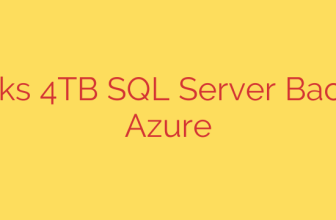
Data centers are the silent powerhouses of the digital world, providing the essential infrastructure that drives nearly every application we use daily, from basic web browsing to advanced artificial intelligence. More than just buildings filled with servers, they are complex ecosystems designed to host, manage, and process vast amounts of data and applications with exceptional reliability, performance, and security.
At their core, data centers support a wide array of critical applications. One of the most significant is cloud computing, which allows businesses and individuals to access computing resources—servers, storage, databases, networking, software, analytics, and intelligence—over the internet. This shift has transformed how applications are deployed and scaled, making services more flexible and cost-effective. Public cloud platforms hosted within massive data centers are fundamental to this revolution.
Beyond cloud services, data centers are vital for enterprise applications. This includes everything from resource-intensive ERP systems and customer relationship management (CRM) software to email servers, databases, and internal networking infrastructure. Businesses rely on the availability and responsiveness of these applications, making the underlying data center infrastructure absolutely crucial.
The rise of artificial intelligence (AI) and machine learning (ML) also heavily depends on data centers. Training complex AI models requires immense computational power and the ability to process massive datasets, tasks performed on specialized servers and hardware housed within data centers. Inferencing, the process of using trained models, also relies on data center infrastructure for speed and scale.
Furthermore, data centers facilitate big data analytics, enabling organizations to derive valuable insights from large and complex datasets. This involves powerful processing capabilities and high-speed storage solutions that data centers are specifically designed to provide.
Other key applications include content delivery networks (CDNs), which cache web content closer to users for faster delivery; disaster recovery and business continuity solutions, ensuring operations can continue even after disruptive events; and the infrastructure supporting the internet of things (IoT), handling data streams from countless connected devices.
Effectively supporting these diverse applications requires a robust data center infrastructure. This involves high-density computing resources, advanced networking equipment capable of handling massive data flows, reliable and scalable storage solutions, sophisticated power management systems, and environmental controls to maintain optimal operating conditions. Security is paramount, involving both physical safeguards and advanced cybersecurity measures to protect sensitive data and applications.
Ultimately, the success of modern digital services and business operations hinges on the capabilities and efficiency of the data centers that house them. They are the invisible foundation powering the innovation and connectivity that define our digital age. Understanding their role and the breadth of applications they support is key to appreciating the complexity and importance of this vital infrastructure.
Source: https://www.datacenterdynamics.com/en/whitepapers/data-center-application-guide/








